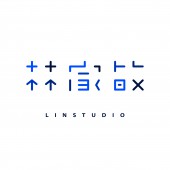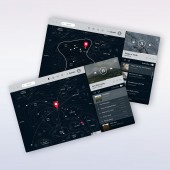DESIGN NAME:
Musiac
PRIMARY FUNCTION:
Music Recommendation Service
INSPIRATION:
Musiac started with a simple notion. Interface is the tangent point between our perception and reality. I believe interface reflects a subtle world of why we make choices. I ran into a website called Every Noise at Once and found it's a perfect database to test my theory. Interface has a higher-level goal of helping us to process information better. I want to design something that goes beyond data visualization and empower users to be more proactive upon the world they're seeing.
UNIQUE PROPERTIES / PROJECT DESCRIPTION:
Musiac is a music recommendation service aims to provide better selection mechanism. It uses a contour map to represent all musical genres in a single interface, showing the relationship across songs and genres in a 2D space. It maps out a taste bubble from the user's playlists, separating the user's prior musical taste field from the unexplored musical territory. The user can change the outline of the bubble by dragging it and expanding the scope of the recommendation algorithm.
OPERATION / FLOW / INTERACTION:
Musiac is a desktop application with an unusual interface, allows users to control the scope of recommendations and to manipulate the filtered results. It uses a bubble to separate the unexplored genres from the familiar genres. A user could easily change the shape of the bubble to expand the recommendation source. It also provides multiple filters, such as themes with different adjectives; numbers of views, finding songs with specific traits, and a guiding system to go beyond the comfort zone.
PROJECT DURATION AND LOCATION:
Musiac was a one year project done in 2018, Detroit.
|
PRODUCTION / REALIZATION TECHNOLOGY:
Musiac learns from "Every Noise at Once", has a virtual database, a theoretical possible algorithmically-generated map, and an ethical interface to reduce the bio-cost of finding liked songs from enormous options. It starts with a study of recommendation engines and filters, interviews, and a pre-testing, then ideates with "what if" questions along the generative design process, run through 2 round of user-testing to validate initial concepts and iterates. The project took a year to finalize.
SPECIFICATIONS / TECHNICAL PROPERTIES:
Musiac is a desktop application. It requires a user to import his/her playlists of third-party apps to build the "Taste Bubble" at the beginning. The bubble sits on an algorithmically-generated genres map, with a horizontal (electric, acoustic) and a vertical (atmospheric, bouncier) indication. The bubble separates the familiar and unexplored territory for a user so he/she could expand the recommendation (temporarily), without changing their behavior.
TAGS:
Algorithm autocracy, Ethical interface, Information architecture, Data visualization, User empowerment, Collaborative filtering
RESEARCH ABSTRACT:
Musiac ran with a waterfall and agile hybrid methodology: research, framing, prototype, test, and reflecting. Feedback was collected along the way and therefore, multiple iterations. I did solid case studies, interviewed active and passive music online streaming users, and consulted with programmers to finalize the proper frame of this project. Multiple user testings with a clickable prototype were performed in-person, as well as online.
CHALLENGE:
The most difficult part of this project is to find an industry professional to talk to me. Online streaming service is a very competitive field. Hence, business and advertising dominate the final result of music recommendations, which creates intransparent and unethical algorithms. Academics and scholars provide enthusiastic feedback, but one of the business executives cancel his help after he saw my questions list.
Another major research constrains is the fuzzy relationships of million users' playlists. Single users' taste bubble might not accommodate with the overarching dimensions, even though the machine could easily map his or her playlists into an individual lump. After I consulted with the famous founder of EveryNoise, he gives me great advice that I should have customized dimensions for different users to solve this issue. The system could map out the contour map from each individual users perspective, based on what's the location of the taste bubble, then decide how to show the rest of the genres. Despite the computation power is not efficient enough for this project, but this solution is definitely feasible at the nearby future.
ADDED DATE:
2019-09-07 03:47:16
TEAM MEMBERS (1) :
IMAGE CREDITS:
All materials required in this project doesn't need attributions. Licenses are attached in the documentation appendix.
|










